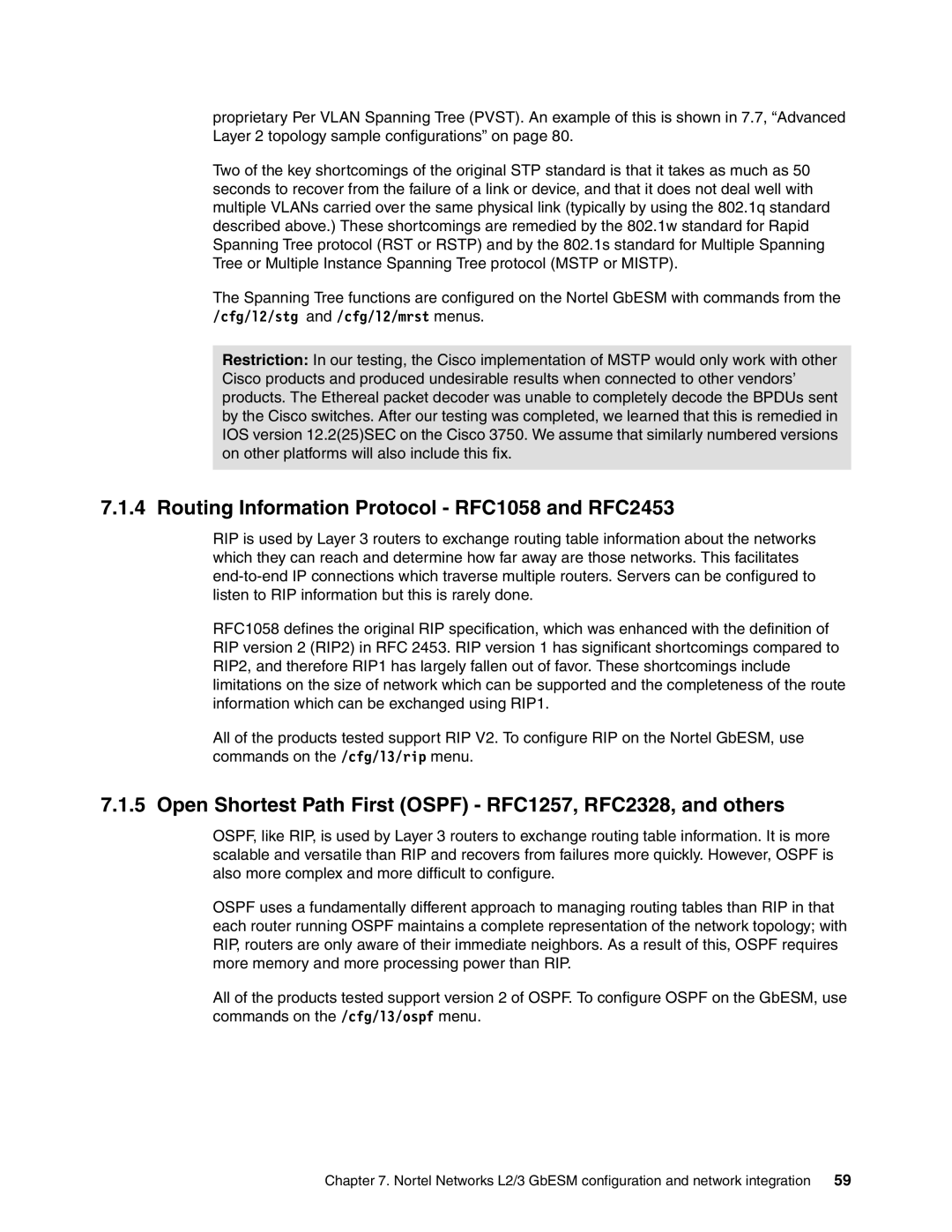
proprietary Per VLAN Spanning Tree (PVST). An example of this is shown in 7.7, “Advanced Layer 2 topology sample configurations” on page 80.
Two of the key shortcomings of the original STP standard is that it takes as much as 50 seconds to recover from the failure of a link or device, and that it does not deal well with multiple VLANs carried over the same physical link (typically by using the 802.1q standard described above.) These shortcomings are remedied by the 802.1w standard for Rapid Spanning Tree protocol (RST or RSTP) and by the 802.1s standard for Multiple Spanning Tree or Multiple Instance Spanning Tree protocol (MSTP or MISTP).
The Spanning Tree functions are configured on the Nortel GbESM with commands from the /cfg/l2/stg and /cfg/l2/mrst menus.
Restriction: In our testing, the Cisco implementation of MSTP would only work with other Cisco products and produced undesirable results when connected to other vendors’ products. The Ethereal packet decoder was unable to completely decode the BPDUs sent by the Cisco switches. After our testing was completed, we learned that this is remedied in IOS version 12.2(25)SEC on the Cisco 3750. We assume that similarly numbered versions on other platforms will also include this fix.
7.1.4 Routing Information Protocol - RFC1058 and RFC2453
RIP is used by Layer 3 routers to exchange routing table information about the networks which they can reach and determine how far away are those networks. This facilitates
RFC1058 defines the original RIP specification, which was enhanced with the definition of RIP version 2 (RIP2) in RFC 2453. RIP version 1 has significant shortcomings compared to RIP2, and therefore RIP1 has largely fallen out of favor. These shortcomings include limitations on the size of network which can be supported and the completeness of the route information which can be exchanged using RIP1.
All of the products tested support RIP V2. To configure RIP on the Nortel GbESM, use commands on the /cfg/l3/rip menu.
7.1.5 Open Shortest Path First (OSPF) - RFC1257, RFC2328, and others
OSPF, like RIP, is used by Layer 3 routers to exchange routing table information. It is more scalable and versatile than RIP and recovers from failures more quickly. However, OSPF is also more complex and more difficult to configure.
OSPF uses a fundamentally different approach to managing routing tables than RIP in that each router running OSPF maintains a complete representation of the network topology; with RIP, routers are only aware of their immediate neighbors. As a result of this, OSPF requires more memory and more processing power than RIP.
All of the products tested support version 2 of OSPF. To configure OSPF on the GbESM, use commands on the /cfg/l3/ospf menu.
Chapter 7. Nortel Networks L2/3 GbESM configuration and network integration 59
